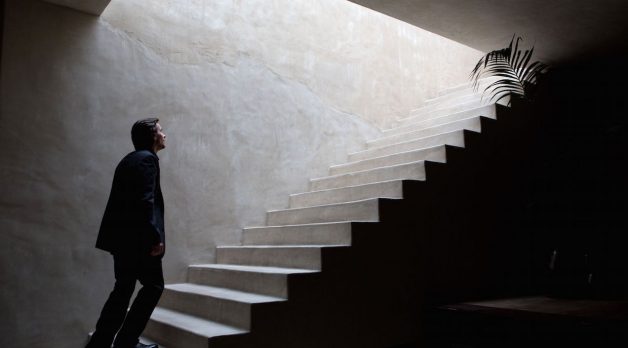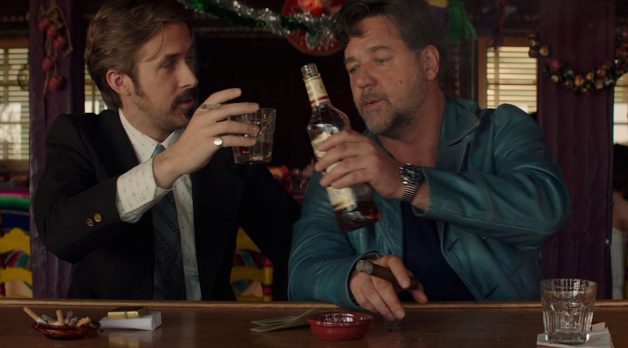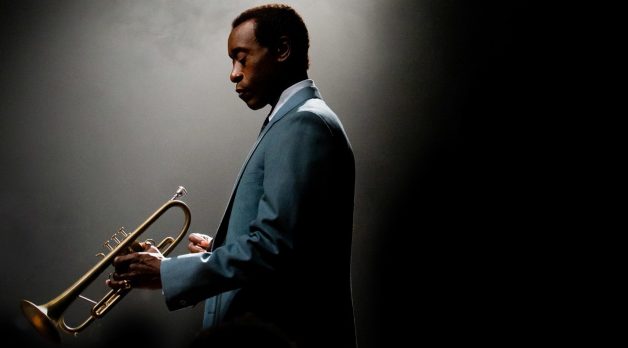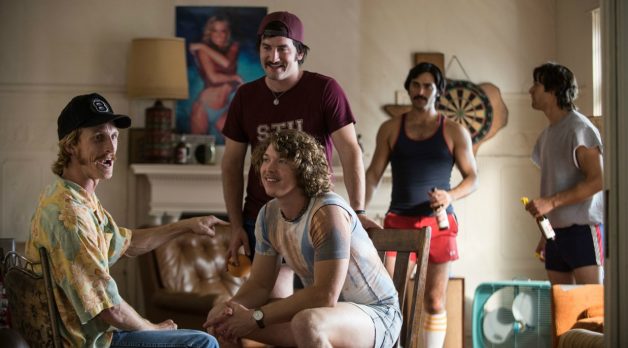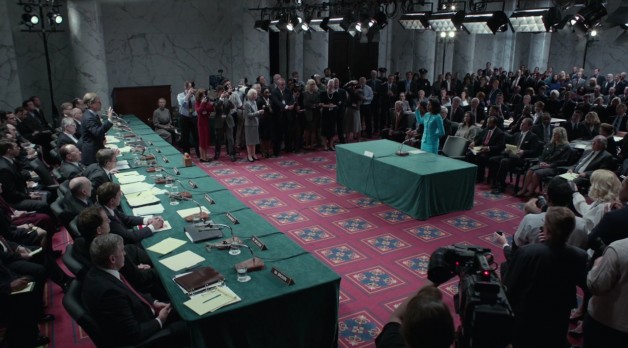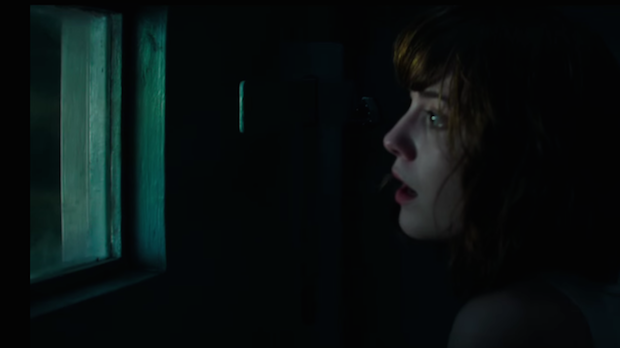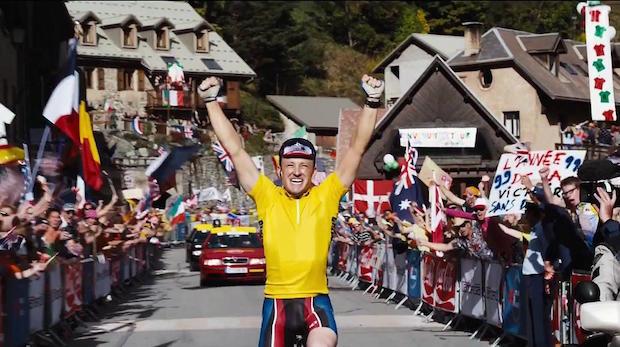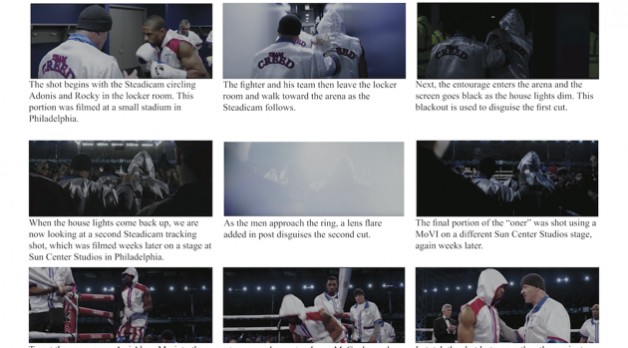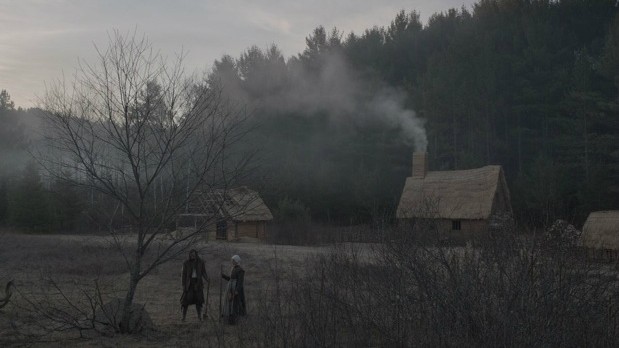Shutter Angles
Conversations with DPs, directors and below-the-line crew by Matt Mulcahey
-
 DP Paul Yee on The Fits, Achieving Close Eyelines and Getting an Unexpected Steadicam Bump
DP Paul Yee on The Fits, Achieving Close Eyelines and Getting an Unexpected Steadicam Bump
In the opening shot of The Fits, the slender frame of 11-year-old tomboy Toni glides in and out of a static medium shot as she counts off sit-ups while peering down the center of the camera’s lens. The image embodies the distinctive dichotomy of the film’s style – a mixture of neorealism and abstract lyricism that taps into the simultaneous horror and yearning of adolescence. The influence of neorealism is found in the cast of non-actors (led by Royalty Hightower as Toni) and the setting, a community center in Cincinnati where a mysterious wave of seizure-like fits strikes the dance… Read more
-
 Colorist Bryan McMahan on Knight of Cups, Working with Terrence Malick and the HDR Future
Colorist Bryan McMahan on Knight of Cups, Working with Terrence Malick and the HDR Future
The Horatio Alger myth for the Golden Age of Hollywood’s studio system involved a bright, ambitious lad working his way up from the mailroom or his post as a clapper boy. By the time Bryan McMahan entered the movie business in the late ’70s, that studio system had long crumbled, but his beginnings were every bit as humble. McMahan’s first gig was as a film lab janitor. Thirty-odd years later he’s Terrence Malick’s colorist of choice, having worked as either the digital intermediate colorist or the mastering colorist on The Thin Red Line, The New World, The Tree of Life,… Read more
-
 DP Philippe Rousselot on The Nice Guys, Learning from Néstor Almendros and Loving China Balls
DP Philippe Rousselot on The Nice Guys, Learning from Néstor Almendros and Loving China Balls
Shane Black was just 24 years old when he sold the spec script that would become Lethal Weapon. Since then Black’s name in the credits – whether as writer or director – brings a certain set of expectations: tarnished, mismatched heroes (likely of the cop and/or private detective variety); a plot overflowing with set-ups and pay-offs, reversals, and sly humor; the subversion of genre tropes; and at least an 85 percent chance of a Christmas setting. Most of that checklist gets ticked off in Black’s latest The Nice Guys, a detective yarn in which a private investigator (Ryan Gosling) and… Read more
-
 A Miles Davis Fever Dream: DP Roberto Schaefer on Miles Ahead
A Miles Davis Fever Dream: DP Roberto Schaefer on Miles Ahead
Like many aspiring filmmakers, cinematographer Roberto Schaefer spent his youth fermenting his imagination by creating his own backyard epics. But unlike your typical kid – who concentrates on, depending on the era, recreating Harryhausen or Spielberg or maybe just blowing up G.I. Joes with M-80s on camera – Schaefer crafted abstract, experimental 8mm films. “I did do a couple of stop-motion things, but I was always more into art than movies growing up,” Schaefer said. “I liked going to the movies, but I wasn’t thinking about making movies like the ones I saw at the theater. I was thinking about… Read more
-
 “OK, Storaro, Let’s Go”: DP Shane F. Kelly on Working with Richard Linklater and Everybody Wants Some!!
“OK, Storaro, Let’s Go”: DP Shane F. Kelly on Working with Richard Linklater and Everybody Wants Some!!
After a decade working with Richard Linklater, cinematographer Shane F. Kelly has learned that the most important rule on a Linklater set is that the performers have primacy. “Rick wants you to provide him with a stage for his actors to work within. So as a DP you can’t really be too controlling,” Kelly said. “He wants the actors to have freedom of both performance and movement and if I try to restrict that, I’ll get a little nod from Rick.” It’s a lesson Kelly learned in his first collaboration with Linklater on 2006’s A Scanner Darkly, when the Irish-born… Read more
-
 Managing Anamorphics in 16:9 and the HBO Learning Curve: DP Rachel Morrison on Confirmation
Managing Anamorphics in 16:9 and the HBO Learning Curve: DP Rachel Morrison on Confirmation
During our talk about her work on HBO’s Confirmation, cinematographer Rachel Morrison lamented that “as a DP you wish you had total freedom to tell whatever story you want to tell, however you want to tell it.” Of course, that’s not the reality of production. Parameters are always imposed – whether they are budgetary restrictions or technological specifications. Morrison talked to Filmmaker about working within her given parameters – including a 16:9 aspect ratio, losing the hero location shortly before production, and dealing with the garish decor of the early 1990s – to craft HBO’s reconstruction of the acrimonious Clarence… Read more
-
 DP Jeff Cutter on Shooting 10 Cloverfield Lane in Near-Sequence, Dragon vs. Alexa and Six Specific Shots
DP Jeff Cutter on Shooting 10 Cloverfield Lane in Near-Sequence, Dragon vs. Alexa and Six Specific Shots
Because the wheels of the movie machine turn slowly, timeliness is not among cinema’s primary virtues. Thus when a movie reflects an aspect of the cultural zeitgeist, it’s either an act of Nostradamian foresight or sheer luck. I don’t know which is the case with 10 Cloverfield Lane, but there’s something about this tense three-hander—which finds a paranoid middle aged white man (John Goodman) fighting to preserve his notion of American ideals inside a bomb shelter alongside a young woman (Mary Elizabeth Winstead) who refuses to accept his envisioned role—that feels right at home in a world where a President… Read more
-
 Lance Armstrong as Modern Crime Story: Stephen Frears on The Program
Lance Armstrong as Modern Crime Story: Stephen Frears on The Program
“When I’m out there, physically I’m not more gifted than anybody else. It’s just this desire. This hunger,” intones Ben Foster as Lance Armstrong in the opening narration of The Program. “My mom didn’t raise a quitter and I would never quit. That’s heart, man, that’s not physical. It’s not legs. It’s not lungs. That’s heart. That’s soul. That’s just guts.” That’s the great fallacy of the American underdog sports drama — if you have enough heart and enough guts, you can succeed. It’s the underlying myth of Rocky and even based-on-fact tales of athletic fortitude such as Hoosiers and… Read more
-
 How They Pulled Off Creed’s Two Biggest Shots: A-Camera Operator Ben Semanoff
How They Pulled Off Creed’s Two Biggest Shots: A-Camera Operator Ben Semanoff
There are few moments in cinema as iconic as Rocky Balboa bounding up the steps of the Philadelphia Museum of Art, with Steadicam inventor Garrett Brown galloping alongside him off-screen. The technology for Brown’s camera stabilization system was new enough at the time that the seminal shot required a crew member to sprint behind Brown with two car batteries attached to the camera via jumper cables in order for the rig to function in the cold Philly winter. Creed, an expansion of the Rocky universe from Fruitvale Station director Ryan Coogler, offers a barometer for the Steadicam’s evolution with its… Read more
-
 “We Needed the Fresh Urine of a Nanny Goat”: DP Jarin Blaschke on The Witch
“We Needed the Fresh Urine of a Nanny Goat”: DP Jarin Blaschke on The Witch
In the midst of my opening day viewing of The Witch, the screen went black. It wasn’t unexpected considering the multitude of perfectly timed ellipses that punctuate director Robert Eggers’ 17th century tale of a devout Christian family torn asunder. And this particular ellipsis seemed opportunely placed – coming just as the film’s hypothetical dread morphed into tangible terror. But this time, the darkness persisted. The theater’s projector bulb had burned out. Of course, the audience didn’t know that yet. At any other screening, the reaction would’ve been instantaneous. My fellow moviegoers and I would’ve turned to the projector and… Read more

